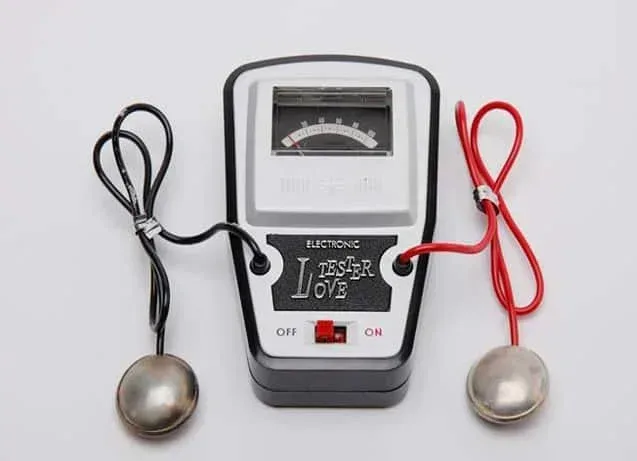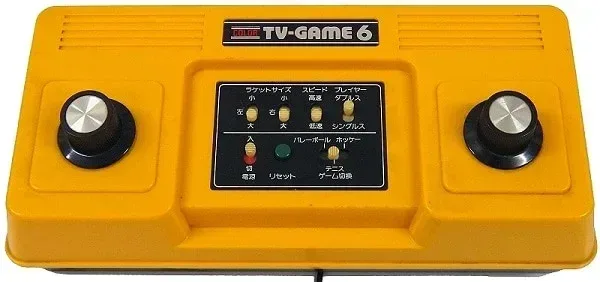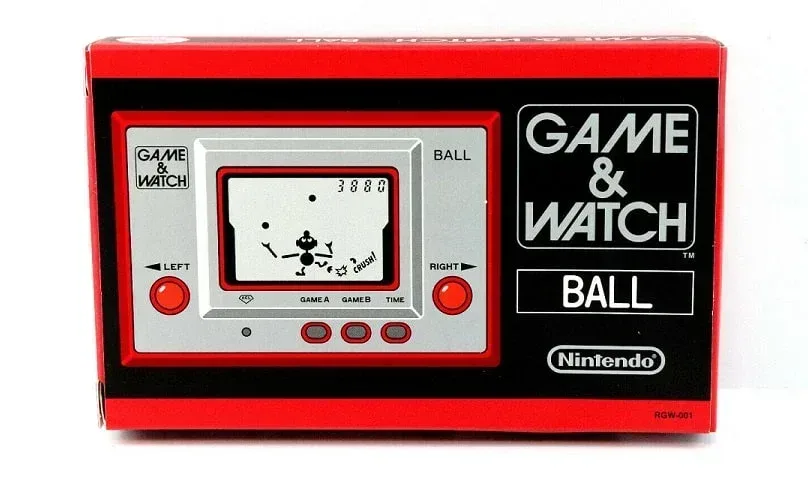If you’ve ever wondered what the first Nintendo game was, then this is the page is for you. I was curious and decided to spend a wet afternoon researching so you don’t need to. I hope it helps.
Here’s is a quick list of what I found when looking for the first Nintendo game.
| First Nintendo Game Category | Game Name | Release |
| Card Game | Hanafuda Playing cards | 1889 |
| Plastic Toy Game | Ultra Hand | 1966 |
| Electronic Game | Love Tester | 1969 |
| Arcade Game | Laser Clay Shooting System | 1973 |
| Home Console Game | Light Tennis | 1977 |
| Arcade Game To Use Computer Graphics | Computer Othello | 1978 |
| Handheld Digital Game | Ball | 1980 |
When we think of the first Nintendo game, we usually think of video game classics like Donkey Kong or Duck Hunt on the SNES. I discovered that the story behind how Nintendo evolved to produce those games was a mix of both “interesting” and “slightly odd”.
Nintendo’s house of cards
Founded on 23 September 1889 by Fusajiro Yamauchi as “Nintendo Koppai”, the company began life by making and marketing Japanese playing cards called Hanafuda. In those days, card games were a common and popular pastime and the company expanded as a profitable family business.
Skip forward several decades and the story had significantly changed. The company renamed itself to just “Nintendo Company” and realising the playing card market was dwindling, it also began investing in other avenues of revenue including a TV station, food company and a “Love Hotel” chain.
Again. Nintendo once owned a chain of “Love Hotels”. Let that just sink in.
With no history of experience in these areas, the ventures failed, almost bankrupting the company and forced Nintendo to refocus on their hobby and family pastime foundations. This led to the creation of several products starting with their first toy, the Ultra Hand in 1966.
Nintendo gets a helping hand
Invented by Gunpei Yokoi, a Nintendo maintenance man turned toy designer, the Ultra Hand was a simple device made up of crisscrossing lengths of plastic that ended in two small gripping cups at one end and two short handles at the other. Squeezing the handles together, extended the whole thing and caused the two cups at the other end to come together and (potentially) grip things that would normally be too far away to get gripped.
In the sixties Japan, this was clearly deemed a massively fun thing to do because the toy went on to sell over a million units and single-handledly (sorry), saved the company from ruin.
Building on his initial success, Yokoi went onto to release other toys under the “Ultra” brand and then began expanding beyond just mechanical toys into electronic ones.
Testing times for Nintendo
The first Nintendo electronic game was also created by Gunpei Yokoi and looked far more like an electrician’s ammeter than a toy. Released in 1969, the product was aimed at young adults rather than children. The players each held a metal paddle which was attached by wire top the main device. When activated a needle on the Love Tester would move and show a score of 0 to 100. The high the number the better the chemistry between them. Yokoi has been quoted as saying that the toy worked better when the players kissed!
Again, I’m not sure how this could ever be described as a game or toy by Nintendo, but it really was a raging success and even sold outside of Japan (albeit as a lie detector!). In fact, it was so successful that it was even re-released in 2010 and of course, sold out.

How the Laser Clay Shooting System became the first Nintendo arcade game
Things get less loving and more shooty when we move on a few years to the development of the Kousenju SP light-beam guns a few years later. These were plastic guns that emitted a short flash of light when the trigger was pulled. Special targets equipped with a sensor would register the light if the flash hit in the right spot. In Jumping Bottle, released by Nintendo in 1970, the sensor broke a small electromagnet circuit that in turn, split the bottle horizontally into two halves.
It was this technology that led Nintendo to develop their first real arcade game in January 1973 – the Laser Clay Shooting System.
Quick side note: We are going to explore this game in a little more detail now, but remember the importance of the light guns because we will come back to them later…
The Laser Clay Shooting System consisted of an overhead projector that displayed flying clay pigeons. The projection shone against a woodland scene that was painted onto the back wall. Facing the wall, customers would fire their laser or light guns and their shots were registered by a network of reflective surfaces. If they made a successful hit, the projector swapped out the whole pigeon for one that had been shot and the customer would have his point score increased.
Despite the company having to house their game in an abandoned bowling alley due to its setup size and a near-disastrous breakdown of the equipment on launch day, the Laser Clay Shooting System become an amazing success for the company. Nintendo were soon opening other outlets in the country and even received external orders from other Asian countries.
To maintain the lucrative business venture they now had, Nintendo began working on reducing the size and arrangement of the game, releasing a smaller four-player version called “Mini Laser Clay” a year later, that could be housed in much smaller premises.
Over the next few years, Nintendo continued to use and refine these game elements; swapping the overhead projector for videotape in its 1974 Wild Gunman game and then removing the gun completely in its six-player horse and car race betting game, EVR-Race in 1975.
Nintendo’s first home console game
Remember the Kousenju SP light guns? Well along with kick-starting Nintendo’s arcade game (pun intended), they also played a major role in the development of the first Nintendo home console.
It was the light-gun know-how that enabled a partnership with American electronics company Magnavox in 1971. Magnox were working on the Magnavox Odyssey which they would release in 1972 as the first TV-based, home video game console. Together, the two companies developed a light gun for use with an upcoming console game “Shooting Gallery” which was released towards the end of 1972.
So well did the relationship go, that by 1974 Nintendo had won the right to license the Odyssey in Japan. Never one to be content with playing second fiddle, Nintendo soon began work on developing their own home console system (with a little help from Mitsubishi) which they released in Japan, four years later, on June 1st, 1977.

This console, Nintendo decided to name the Color TV-Game 6.
The console came in either orange or white, connected to a standard television set and allowed one player to play against the console or two players against each other. Instead of detachable controllers, the TV-Game 6 had two knobs on either side of the console that would allow the player to move a digital paddle up and down on the TV screen.
The only game available was called “Light Tennis” which looked and played very much like Pong, albeit with a brightly coloured background. Gameplay was simple: players would hit the ball back and forth, ensuring that it doesn’t go past their paddle. The “6” in the consoles name represented six different variations of the game.
Although the console did go one to sell over 350,000 units, keeping it affordable meant that every initial unit sold was done so at a loss. To stop the hemorrhaging of money Nintendo released an improved version the console called the Color TV-Game 15 a week later. This featured nine more games, detachable controllers and a more refined look. It went on to sell 700,00 units and ensured that the venture was in the black.
Nintendo continued the Color TV console range with the release of Color TV-Game Racing 112 a year later, on June 8th, 1978. Since all 112 games were variations of a driving game, it did away with controllers altogether and instead had a steering wheel affixed to the centre of the console.
By this time Nintendo had proved itself capable of providing digital video games to the home audience and returned its attention back to arcade games. The last two Color TV consoles in the series were ports of these arcade games; Color TV-Game Block Breaker released on April 23rd 1979 and Color TV-Game released a year later.
This last console was based on the very first computerised graphics arcade game Nintendo ever made: Computer Othello.
Computer Othello: Nintendo’s first arcade game to use computer-generated graphics
Released only in Japan in 1978, Computer Othello was the first arcade game produced by Nintendo that used computer video graphics displayed on a CRT screen. Prior to this, the Nintendo offering has used pre-recorded video footage in their arcade games. The game allowed either one player to play against the computer opponent or two players to play against each other.
Just like the board game, players had to outflank each other placing tokens onto a square board. The screen and hence the playing board were green and the usual black and white tokens of the board game were replaced by a plus and square symbol respectively.
Each player had a series of 10 buttons to control where they lay their pieces and the whole game was installed into what Nintendo called a “cocktail table” style cabinet with the screen facing upwards rather than towards and in front of the players.
Although very basic in nature, the computer graphics used in computer Othello paved the way for a whole series of arcade classics many of which then found their way into the home console too.
Nintendo’s first handheld game
Remember Yokoi? Well rather than calling it a day after a very successful run of plastic and electronic toys inventions, he stayed with Nintendo and became the inventor of their first handheld digital game too.

The game was called “Ball” and was released on 28th April 1980. It was released as part of the “Silver” series of Game and Watch games and then re-released as for the company’s anniversary years later.
The gameplay for Ball was very basic; you controlled a juggler and used two buttons to move his arms, attempting to catch and toss either two or three balls in the air, depending upon the game mode. The more you juggled, the faster the game got.
Related Question
What was the very first Mario game?
Donkey Kong, released ion 1981, was the first game to use the Mario character. However, at that time he was known as Jumpman. His name was changed to Mario in the Donkey Kong sequel, Donkey Kong Jnr. Mario Bros. released in 1983, was the first game to use Mario as the title character.

